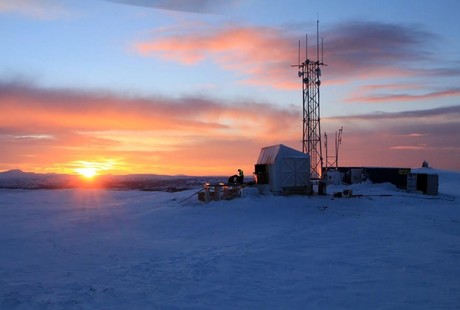New mission-critical comms system reaches the North Pole

Touted as the most advanced mission-critical communications system in the world and one of the largest contracts in Motorola Solutions’ history, Nødnett has been officially completed in Norway.
The country’s new nationwide digital terrestrial trunked radio (TETRA) communications system for emergency and rescue services was a big challenge to install, considering the network’s size, its complexity, the type of technology needed and the extremes of Norway’s geography and climate.
To complete Nødnett, Motorola Solutions installed more than 20,000 km of microwave transmission lines — more than enough to run from Oslo to Mexico City and back again — with the network including regions as far north into the Arctic Ocean as Svalbard (the Norwegian archipelago between Norway and the North Pole).
And because Norway’s high latitude means the northern sites are shrouded in darkness 24/7 during the winter months, with temperatures plunging to -40°C, installations teams often found themselves climbing 50 m up entombed radio towers to remove problematic ice by hand.
“From coastal fjords to the mountains, and from urban centres to the remote Polar North, the task of providing nationwide secure and resilient communications across Norway’s complex and challenging landscape has been expertly managed by prime contractor Motorola Solutions,” said Tor Helge Lyngstøl, director general, Directorate for Emergency Communication (DNK), Norway.
The coverage encompasses 330 emergency call centres connected by 2170 base stations. More than 45,000 users from the police, fire and health agencies, plus voluntary rescue organisations and customs, make nearly 1.5 million calls each month over the network.
The network coverage also extends through 310 road tunnels for 758 km — about eight hours of solid driving without ever seeing the light of day. The tunnels include the Laerdal tunnel (the longest road tunnel in the world) and the world’s deepest subsea tunnels, the Eiksund and Bumlafjord tunnels.
Motorola Solutions teams overall drove 817,000 km conducting radio coverage testing — the equivalent of 20 times around the equator. Nearly 14,000 km were travelled by helicopter to test air-to-ground-to-air coverage.
One-third of all Nødnett base stations are already equipped with TETRA Enhanced Data Services (TEDS) and Motorola Solutions has provisioned WAVE Work Group Communications to deliver enhanced connectivity, interoperability and collaboration for Nødnett by offering radio-like ‘push-to-talk’ (PTT) on smartphones and connected devices. The network is also ready for public safety broadband bearers, such as long-term evolution (LTE).
“This reliable, nationwide, end-to-end, encrypted TETRA network now replaces hundreds of ageing regional public safety systems. Despite operating in some of the most remote parts of Europe, the police, fire, paramedic and health agencies have access to clear, secure and immediate data and voice calls so that they can communicate together and save lives,” said Manuel Torres, senior vice president and general manager Europe, Africa and Latin America, Motorola Solutions.
The company said it will maintain and provide operational support for the next 10 years.
Relationship between ACMA and telcos raises concerns
Correspondence found between Optus and the ACMA raises serious questions about the close dealings...
Govt announces programs to enhance resilience during disasters
The Broadcasting Resilience Program is funding five mobile broadcast assets that can be deployed...
Improving accuracy of radar and LiDAR
Among its possible uses, the new technology could contribute to implementing autonomous cars and...




